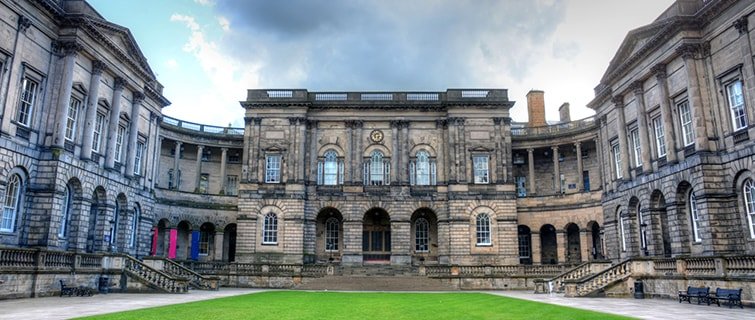
Of all the solutions that have regularly been offered to tackle the problems facing higher education today, perhaps no term is as popular as “innovation.” But what does it mean? Can it really make a difference, and if so, how?
For the past five years, we have guided a program that explores these very questions and strives to equip academic leaders with the perspective, skills, and context to address some of higher education’s toughest problems. By now, the Academy for Innovative Higher Education Leadership, a joint exercise between Arizona State University and Georgetown University, has engaged more than 125 academic leaders from provosts to deans in this challenge. The results from each of the five cohorts that have spent eight months with us bear valuable lessons for colleges and universities of every kind. Cohort after cohort, we have seen participants discover that so-called intractable problems may not be so intractable after all.
As a prophylactic against faddishness, the first thing fellows in the academy learn is that innovation in higher education is not new. Today’s higher education landscape is an amalgam of the handcrafted model from the 18th century, the mass production model from the 19th century, and the specialization model that gained prominence in the 20th century. In other words, to the contrary of much of today’s rhetoric, higher education has adapted significantly over the centuries.
Next, they discover that this three-part inheritance has led to an unwieldy tension among the oft-stated goals of quality learning, equitable access, and productive research. These competing missions make most universities highly resistant to fundamental reform, often without university leaders fully grasping why.
This tension has led to a great deal of attention focused on revolutionary “disruptive” change in higher education. We pay attention to the analysis underlying Harvard Business School’s Clayton Christensen and his unbundling of teaching, research, and residency, and the limits of applying his analysis to higher education. And we take seriously the strategy of Arizona State’s president, Michael Crow, to re-bundle at scale in order to increase both access and impact.
Yet a central but often overlooked lesson is that innovation comes in different flavors and takes a variety of forms. More evolutionary or “radically incremental” approaches also offer fresh solutions to systemic issues. As Randy Bass, Georgetown’s vice provost of education, has told fellows in the program, useful strategies will almost certainly need to draw from modular, often technology-driven disruptive forces as well as from the need for integrated, whole learning experiences.
In short, to be effective, innovation must make sense and fit the context to which it is applied. It is imperative to inspire institutional innovation and to engage with thoughtful critics. Every campus includes both. What is needed is a well-conceived innovation process that is connected to an institution’s historical strengths, current needs, realistic strategies, and aspirations for the future.
At Oregon State University, for example, academy alumna Susanna Rivera-Mills gained faculty support to use predictive analytics to admit and graduate a larger and more diverse student body. By revising high-risk introductory courses and adding emergency financial grants, Oregon State significantly reduced attrition and improved retention. “We learned to involve and engage the faculty early on,” Rivera-Mills observed. “We let them own the process and created a space and time for them to be creative with redesigning the courses.”
At the Georgia Institute of Technology, academy alumnus Charles Isbell helped to lead the development of a top-quality online offering that cost pennies compared to competitors’ offerings. This program reached students who were not able to attend a full-time residential program. As The New York Times has noted, “The combination of a prestigious department, traditional degree and drastically lower price was something new in American higher education.” What’s more, Isbell said he spends more time helping students with assignments online compared to on campus. “The experience for the students and for me is much richer online,” he told the Times.
For one of us, participation in the academy overlapped with an innovation challenge: create an interdisciplinary curriculum for a new liberal arts university in China and hire a faculty to match it. The opportunity was to take the hallmarks of Duke University’s Western liberal arts approach and blend them with China’s deep educational traditions.
The innovation was to create an integrated, immersive experience, flexible structures for delivery, and a new form of locally rooted, global education. And the entire endeavor had to include redesigning the hiring process to ensure that faculty members understood the entire system and were eager to fit their individual contributions into it.
In all three of these examples, innovation is about seeing new possibilities in old problems. To do this, academic leaders must have a clear-eyed view of the issues and a willingness to define the challenge creatively. They can’t see the usual issues with new eyes without looking at what is and then imagining “what if?” Left to our own devices, we often solve for what we know instead of creating better, more thoughtful designs that go directly to the heart of what needs innovation.
Leading change is also an experience that changes us—if we let it. Those who must bring about needed change will grow tremendously as they learn how to do this. Giving someone an innovation challenge is an invitation to personal and professional growth.
For Rivera-Mills, her experiences as a first-generation college student who didn’t know how to navigate the higher education landscape fundamentally shaped her life, but, like many academic leaders, she saw herself as a reluctant leader. Her new role was transformative for her university and for her personally.
“In order to really have a broader impact,” she said, “I had to step into a leadership role and go into administration, where I would have access to systems that were directly influencing students.” Her commitment to leading change has had an impact on her own future as well as that of her institution.
